Monacor ATS-25C Handleiding
Monacor
Niet gecategoriseerd
ATS-25C
Bekijk gratis de handleiding van Monacor ATS-25C (7 pagina’s), behorend tot de categorie Niet gecategoriseerd. Deze gids werd als nuttig beoordeeld door 71 mensen en kreeg gemiddeld 3.9 sterren uit 36 reviews. Heb je een vraag over Monacor ATS-25C of wil je andere gebruikers van dit product iets vragen? Stel een vraag
Pagina 1/7

ELECTRONICS FOR SPECIALISTS ELECTRONICS FOR SPECIALISTS ELECTRONICS FOR SPECIALISTS ELECTRONICS FOR SPECIALISTS ELECTRONICS FOR SPECIALISTS ELECTRONICS
ATS-25C
Bestellnummer 25.5180
MONACOR INTERNATIONAL GmbH & Co. KG • Zum Falsch 36 • 28307 Bremen • Germany
Copyright© by MONACOR INTERNATIONAL. All rights reserved. A-1503.99.02.10.2018
POWER
ON
FOR SAFETY REASONS, DO NOT CLOSE TOP CASE WHEN CHARG ING !
M ONACOR INTERNATION AL
•
ZU M FALSCH 36
•
28307 BREM EN
•
GERMAN Y
AT S-25C
5 A12 V
TRANSP ORT CASE WITH
CHARG. FUNCTIO N
1
2
34 6 7 8 93 5
DC IN
12V
⎓
5A
1 Schutzkappe für die Buchse DC IN
2 Buchse DC IN zur Stromversorgung
3 Griffe zu Herausnehmen der Ladeeinheit (5)
4 Betriebsanzeige
5 Ladeeinheit, herausnehmbar
6 Ladeschacht
7 Ladeanzeige
Rot = Akku wird geladen
Grün = Akku ist aufgeladen
Blinkt = Ladefehler
8 Lüftungsöffnungen
9 Staufach für das Netzgerät und das Netzkabel
Ladekoffer für Empfänger ATS-50R
und Sender ATS-50T
Diese Bedienungsanleitung richtet sich an
Benutzer ohne besondere Fachkenntnisse.
Bitte lesen Sie die Anleitung vor dem Betrieb
gründlich durch und heben Sie sie für ein
späteres Nachlesen auf.
1 Verwendungsmöglichkeiten
Der Ladekoffer dient zum Transport der Sender
und Empfänger des ATS-50-Funksys tems und
zum Laden deren NiMH-Akkus. Es können die
Akkus von bis zu 25 Geräten gleichzeitig aufge-
laden werden.
2 Sicherheitshinweise
Die Geräte (Ladekoffer und Netzgerät) entspre-
chen allen relevanten Richtlinien der EU und tra-
gen deshalb das -Zeichen.
WARNUNG Das Netzgerät wird mit lebensge-
fährlicher Netzspannung versorgt.
Nehmen Sie deshalb nie selbst
Eingriffe am Netzgerät vor. Es be-
steht die Gefahr eines elektrischen
Schlages.
•
Betreiben Sie die Geräte nur im Innenbereich.
Schützen Sie sie vor Tropf- und Spritzwasser,
hoher Luftfeuchtigkeit und Hitze (zulässiger
Einsatztemperaturbereich 0 – 40 °C).
•
Stellen Sie keine mit Flüssigkeit gefüllten Ge-
fäße, z. B. Trinkgläser, auf die Geräte.
•
Nehmen Sie den Ladekoffer nicht in Be trieb
bzw. ziehen Sie sofort den Stecker des Netzge-
räts aus der Steckdose:
1. wenn sichtbare Schäden an den Geräten
oder am Netzkabel vorhanden sind,
2. wenn nach einem Sturz oder Ähnlichem der
Verdacht auf einen Defekt besteht,
3. wenn Funktionsstörungen auftreten.
Geben Sie die Geräte in jedem Fall zur Repara-
tur in eine Fachwerkstatt.
•
Ziehen Sie den Netzstecker des Netzgeräts nie
am Kabel aus der Steckdose, fassen Sie immer
am Stecker an.
•
Säubern Sie das Netzgerät und das Kofferin-
nere nur mit einem trockenen, weichen Tuch,
niemals mit Wasser oder Chemikalien. Von
außen kann der Koffer auch mit einem feuch-
ten Tuch abgewischt werden.
•
Werden die Geräte zweckentfremdet, falsch
bedient oder nicht fachgerecht repariert, kann
keine Haftung für daraus resultierende Sach-
oder Personenschäden und keine Garantie für
die Geräte übernommen werden.
Sollen die Geräte endgültig aus dem
Betrieb genommen werden, übergeben
Sie sie zur umweltgerechten Entsor-
gung einem örtlichen Recyclingbetrieb.
3 Akkus aufladen
1) Den Deckel des Ladekoffers öffnen. Bei Bedarf
kann dann der Deckel von den Scharnieren
nach links abgezogen werden.
2) Zum Laden der Akkus kann die Ladeeinheit (5)
im Koffer bleiben oder mit den Griffen (3) aus
dem Koffer herausgenommen werden.
3) -Den 4-poligen Stecker des beiliegenden Netz
gerätes mit den Pfeilen nach oben in die
Buchse DC IN (2) an der linken Seite der Lade-
einheit stecken. Befindet sich die Ladeeinheit
im Koffer, zuvor die Schutzkappe (1) abziehen.
4) Das Netzgerät mit dem Netzkabel an eine
Steckdose (230 V/ 50 Hz) anschließen. Das
Netzgerät und die Ladeeinheit sind jetzt einge-
schaltet: Am Netzgerät leuchtet die Betriebs-
anzeige und an der Ladeeinheit die Anzeige
POWER ON (4).
Zuerst führt die Ladeeinheit einen Selbst-
test durch. Dabei leuchten alle Ladeanzeigen
(7) kurz auf: grün – rot – rot.
Hinweis: Die Ladeeinheit schaltet in den Energie-
sparmodus, wenn 1 Stunde lang kein Gerät in den
Lade schächten (6) eingesteckt ist. Die Anzeige
POWER ON (4) blinkt dann langsam. Sobald ein Gerät
eingesteckt wird, schaltet die Ladeeinheit in den nor-
malen Ladebetrieb zurück.
5) Die Sender und Empfänger aufrecht in die
Lade schächte (6) stecken. Es leuchten die
Lade anzeigen der Schächte, in denen ein
Gerät eingesteckt ist:
Rot = Der Akku wird geladen.
Grün = Der Akku ist aufgeladen und das
Gerät kann dann aus dem Lade-
schacht genommen werden.
Blinkt = Ladefehler, z. B. Akku falsch herum
eingesetzt oder kein NiMH-Akku ver-
wendet.
WICHTIG! Während des Ladens dürfen die Lüf-
tungsöffnungen (8) nicht abgedeckt werden.
Befindet sich die Ladeeinheit im Koffer, muss der
Deckel geöffnet bleiben. Anderenfalls können
durch einen Hitzestau Schäden an den einge-
steckten Geräten und an der Ladeeinheit ent-
stehen.
4 Technische Daten
Ladestrom je Gerät: . . . 430 mA max.
Ladedauer: . . . . . . . . . . ca. 9 Stunden bei
einem 2500-mAh-
Akku, (abhängig vom
Akku-Ladezustand)
Stromversorgung: . . . . . 12 V/ 5 A über beilie-⎓
gendes Netzgerät an
100 – 240 V, 50 – 60 Hz
Einsatztemperatur: . . . . 0 – 40 °C
Abmessungen
(B H T):× × . . . . . . . . . . 442 × 160 × 290 mm
Gewicht: . . . . . . . . . . . . 7,5 kg
Änderungen vorbehalten.
Deutsch

ELECTRONICS FOR SPECIALISTS ELECTRONICS FOR SPECIALISTS ELECTRONICS FOR SPECIALISTS ELECTRONICS FOR SPECIALISTS ELECTRONICS FOR SPECIALISTS ELECTRONICS
MONACOR INTERNATIONAL GmbH & Co. KG • Zum Falsch 36 • 28307 Bremen • Germany
Copyright© by MONACOR INTERNATIONAL. All rights reserved. A-1503.99.02.10.2018
POWER
ON
FOR SAFETY REASONS, DO NOT CLOSE TOP CASE WHEN CHARG ING !
M ONACOR INTERNATION AL
•
ZU M FALSCH 36
•
28307 BREM EN
•
GERMAN Y
AT S-25C
5 A12 V
TRANSP ORT CASE WITH
CHARG. FUNCTIO N
1
2
34 6 7 8 93 5
DC IN
12V
⎓
5A
ATS-25C
Order number 25.5180
1 Protective cap for the jack DC IN
2 Jack DC IN for power supply
3 Handles to remove the charging section (5)
4 LED POWER ON
5 Charging section, removable
6 Charging slot
7 Charging status LED
red = battery is being recharged
green = battery has been fully recharged
flashing = charging error
8 Air vents
9 Storage compartment for the power supply
unit and the mains cable
Charging Case for Receivers ATS-50R
and Transmitters ATS-50T
These instructions are intended for users
without any specific technical knowledge.
Please read these instructions carefully prior
to operation and keep them for later ref-
erence.
1 Applications
This charging case is designed for transporting
the transmitters and receivers of the wireless
system ATS-50 and for recharging their NiMH
batteries. The batteries of up to 25 units can be
recharged at the same time.
2 Safety Notes
The units (charging case and power supply unit)
correspond to all relevant directives of the EU and
are therefore marked with .
WARNING The power supply unit uses dan-
gerous mains voltage. Leave servic-
ing to skilled personnel only. Inex-
pert handling may result in electric
shock.
•
The units are suitable for indoor use only. Pro-
tect them against dripping water and splash
water, high air humidity and heat (admissible
ambient temperature range: 0 – 40 °C).
•
Do not place any vessel filled with liquid on the
units, e. g. a drinking glass.
•
Do not operate the charging case or immedi-
ately disconnect the power supply unit from
the mains socket
1. if one of the units or the mains cable is visibly
damaged,
2. if a defect might have occurred after a unit
was dropped or suffered a similar accident,
3. if malfunctions occur.
In any case, the units must be repaired by
skilled personnel.
•
Never pull the mains cable to disconnect the
power supply unit from the socket, always
seize the plug.
•
For cleaning the power supply unit and the
inside of the case, only use a dry, soft cloth;
never use water or chemicals. For cleaning the
outside of the case, you may use a damp cloth.
•
No guarantee claims for the units and no li-
ability for any resulting personal damage or
material damage will be accepted if the units
are used for other purposes than originally in-
tended, if they are not correctly operated, or if
they are not repaired in an expert way.
If the units are to be put out of oper-
ation definitively, take them to a local
recycling plant for a disposal which is
not harmful to the environment.
3 Recharging the Batteries
1) Open the cover of the charging case. Remove
the cover, if necessary: Pull the cover to the left
to take it off its hinges.
2) To recharge the batteries, either leave the
charging section (5) in the case or use the
handles (3) to take the charging section out
of the case.
3) Connect the 4-pole plug of the power supply
unit provided to the jack DC IN (2) on the left
of the charging section (arrows on the plug
showing upwards). If the charging section is
left in the case, remove the protective cap (1)
before connecting.
4) Use the mains cable to connect the power
supply unit to the mains socket (230 V/ 50 Hz).
Thus, the power supply unit and the charging
section are switched on: The power LED of the
power supply unit and the LED POWER ON (4)
of the charging section light up.
The charging section performs a self-test
first: All charging status LEDs (7) will briefly
light up: green – red – red.
Note: If none of the charging slots (6) is used, the
charging section will go into power saving mode after
1 hour. In this mode, the LED POWER ON (4) keeps
flashing slowly. As soon as a unit has been inserted,
the charging section will resume the normal charging
mode.
5) Insert the transmitters / receivers vertically into
the charging slots (6). When a unit has been
inserted, the charging status LED of the corre-
sponding slot will light up.
red = The battery is being recharged.
green = The battery has been fully re charged
and the unit can be re moved from
the charging slot.
flashing = charging error, e. g. battery in serted
the wrong way or wrong kind of
battery (no NiMH battery)
IMPORTANT! Never cover the air vents (8) while
charging. Always make sure that the cover is
open when the charging section is left in the
case; otherwise, the units inserted and the charg-
ing section may be damaged by heat accumu-
lation.
4 Specifications
Charging current
per unit: . . . . . . . . . . . . 430 mA max.
Charging time: . . . . . . . approx. 9 hours for
a 2500 mAH battery
(depending on battery
status)
Power supply: . . . . . . . . 12 V/ 5 A via power ⎓
supply unit provided
and connected to
100 – 240 V, 50 – 60 Hz
Ambient temperature: . 0 – 40 °C
Dimensions (W × × H D): . 442 × 160 × 290 mm
Weight: . . . . . . . . . . . . 7.5 kg
Subject to technical modification.
English

ELECTRONICS FOR SPECIALISTS ELECTRONICS FOR SPECIALISTS ELECTRONICS FOR SPECIALISTS ELECTRONICS FOR SPECIALISTS ELECTRONICS FOR SPECIALISTS ELECTRONICS
MONACOR INTERNATIONAL GmbH & Co. KG • Zum Falsch 36 • 28307 Bremen • Germany
Copyright© by MONACOR INTERNATIONAL. All rights reserved. A-1503.99.02.10.2018
POWER
ON
FOR SAFETY REASONS, DO NOT CLOSE TOP CASE WHEN CHARG ING !
M ONACOR INTERNATION AL
•
ZU M FALSCH 36
•
28307 BREM EN
•
GERMAN Y
AT S-25C
5 A12 V
TRANSP ORT CASE WITH
CHARG. FUNCTIO N
1
2
34 6 7 8 93 5
DC IN
12V
⎓
5A
ATS-25C
Référence numérique 25.5180
1 Cache de protection pour la prise DC IN
2 Prise DC IN pour l’alimentation
3 Poignées pour retirer l’unité de charge (5)
4 Témoin de fonctionnement
5 Unité de charge, amovible
6 Compartiment de charge
7 Témoin de charge
rouge = accumulateur en charge
vert = accumulateur chargé
clignote = erreur de charge
8 Ouïes de ventilation
9 Compartiment de stockage pour le bloc
secteur et le cordon secteur
Coffret de charge pour
lesrécepteurs ATS-50R et
lesémetteurs ATS-50T
Cette notice s’adresse aux utilisateurs sans
connaissances techniques particulières.
Veuillez lire la présente notice avant le fonc-
tionnement et conservez-la pour pouvoir
vous y reporter ultérieurement.
1 Possibilités d’utilisation
Le coffret de charge permet de transporter les
émetteurs et récepteurs du système sans fil ATS-
50 et de charger leurs accumulateurs NiMH. Il est
possible de charger simultanément les accumula-
teurs de 25 appareils au plus.
2 Conseils de sécurité
Les appareils (coffret de charge et bloc secteur)
répondent à toutes les directives nécessaires de
l’Union européenne et portent donc le symbole
.
AVERTISSEMENT Le bloc secteur est alimenté
par une tension dangereuse.
Ne touchez jamais l’intérieur
de l’appareil car vous pourriez
subir une décharge électrique.
•
Les appareils ne sont conçus que pour une uti-
lisation en intérieur. Protégez-les de tout type
de projections d’eau, des éclaboussures, d’une
humidité élevée de l’air et de la chaleur (plage
de température de fonctionnement autorisée:
0 – 40 °C).
•
En aucun cas, vous ne devez poser d’objet
contenant du liquide, par exemple un verre,
sur l’appareil.
•
Ne faites jamais fonctionner le coffret de
charge et débranchez immédiatement le bloc
secteur lorsque :
1. des dommages visibles apparaissent sur un
des appareils ou sur le cordon secteur.
2. après une chute ou accident similaire..., l’ap-
pareil présente un défaut.
3. des dysfonctionnements apparaissent.
Dans tous les cas, les appareils doivent être ré-
parés par un technicien spécialisé.
•
Ne débranchez jamais le bloc secteur en tirant
sur le cordon, tenez-le toujours par la fiche.
•
Pour nettoyer le bloc secteur et l’intérieur du cof-
fret utilisez uniquement un chiffon sec et doux,
n’utilisez en aucun cas de produits chimiques
ou d’eau. L’extérieur du coffret de charge peut
être essuyé avec un chiffon humide.
•
Nous déclinons toute responsabilité en cas de
dommages corporels ou matériels ré sultants si
les appareils sont utilisés dans un but autre que
celui pour lequel ils ont été conçus, s’ils ne sont
pas correctement utilisés ou s’ils ne sont pas
réparés par une personne habilitée ; de même,
la garantie deviendrait caduque.
Lorsque les appareils sont définitive-
ment retirés du service, vous devez les
déposer dans une usine de recyclage
de proximité pour contribuer à leur
élimination non polluante.
CARTONS ET EMBALLAGE
PAPIER À TRIER
3 Charge des accumulateurs
1) Ouvrez le couvercle du coffret de charge. Si
besoin, le couvercle peut être retiré des char-
nières en le tirant vers la gauche.
2) Pour charger les accumulateurs, l’unité de
charge (5) peut rester dans le coffret ou être
retirée avec les poignées (3).
3) Reliez la fiche 4 pôles du bloc secteur livré à
la prise DC IN (2) sur le côté gauche de l’unité
de charge (avec les flèches vers le haut). Si
l’unité de charge reste dans le coffret, retirez
au préalable le cache de protection (1).
4) Reliez le bloc secteur à une prise secteur 230 V/
50 Hz. Le bloc secteur et l’unité de charge sont
maintenant allumés ; sur le bloc secteur, le té-
moin de fonctionnement brille, sur l’unité de
charge, la LED POWER ON (4) brille également.
L’unité de charge effectue tout d’abord un
auto-test. Toutes les LEDs de charge (7) s’allu-
ment brièvement : vert – rouge – rouge.
Remarque : L’unité de charge passe en mode d’éco-
nomie d’énergie si aucun appareil n’est placé dans
les compartiments de charge (6) pendant une heure.
La LED POWER ON (4) clignote alors lentement. Dès
qu’un appareil est placé, l’unité de charge revient au
mode de charge normal.
5) Placez les émetteurs et récepteurs verticale-
ment dans les compartiments de charge (6).
Les LEDs de charge des compartiments dans
lesquels un appareil est placé, brillent :
rouge = L’accumulateur est en charge.
vert = L’accumulateur est chargé, l’ap-
pareil peut être retiré du compar-
timent de charge.
clignote = erreur de charge, p. ex. l’accumula-
teur est placé à l’envers ou l’accu-
mulateur n’est pas NiMH
IMPORTANT ! Pendant la charge, les ouïes de
ventilation (8) ne doivent pas être obturées. Si
l’unité de charge est dans le coffret, le couvercle
doit rester ouvert. Sinon, les appareils placés et le
coffret de charge peuvent être endommagés par
une accumulation de chaleur.
4 Caractéristiques techniques
Courant de charge
par appareil : . . . . . . . . 430 mA max.
Durée de charge : . . . . . 9 heures environ pour
un accu 2500 mAh
(selon l’état de charge
de l’accu)
Alimentation : . . . . . . . . 12 V/ 5 A par bloc ⎓
secteur livré relié au
secteur 100 – 240 V,
50 – 60 Hz
Température fonc. : . . . . 0 – 40 °C
Dimensions (l h p) : 442 × 160 × 290 mm× × .
Poids : . . . . . . . . . . . . . . 7,5 kg
Tout droit de modification réservé.
Français
Product specificaties
| Merk: | Monacor |
| Categorie: | Niet gecategoriseerd |
| Model: | ATS-25C |
Heb je hulp nodig?
Als je hulp nodig hebt met Monacor ATS-25C stel dan hieronder een vraag en andere gebruikers zullen je antwoorden
Handleiding Niet gecategoriseerd Monacor

17 Augustus 2024

28 Augustus 2023

1 Juli 2023

30 Juni 2023

30 Juni 2023

29 Juni 2023

28 Juni 2023

27 Juni 2023

24 Juni 2023

21 Juni 2023
Handleiding Niet gecategoriseerd
- Catit
- AOC
- GlobalTronics
- Sesame Street
- J. Rockett Audio Designs
- Aqara
- BlaknBlu
- Roline
- Vogel's
- Patriot
- Red Digital Cinema
- S.M.S.L
- Charge Amps
- Little Giant
- Dimavery
Nieuwste handleidingen voor Niet gecategoriseerd
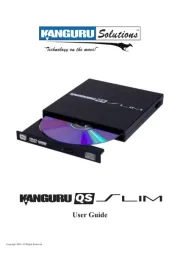
31 Juli 2025
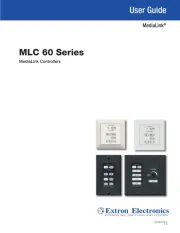
31 Juli 2025
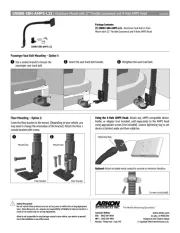
31 Juli 2025
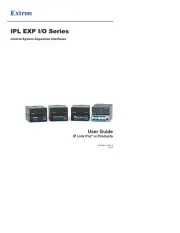
31 Juli 2025
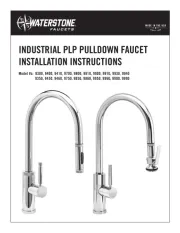
31 Juli 2025
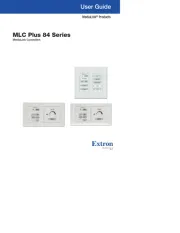
31 Juli 2025
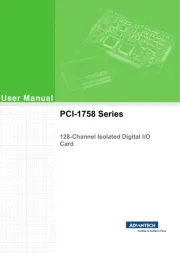
30 Juli 2025
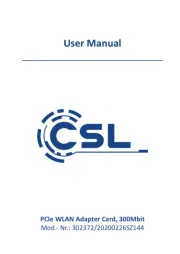
30 Juli 2025
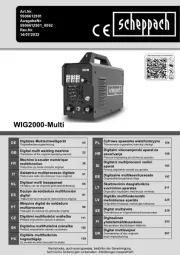
30 Juli 2025
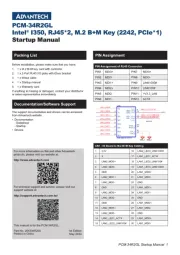
30 Juli 2025